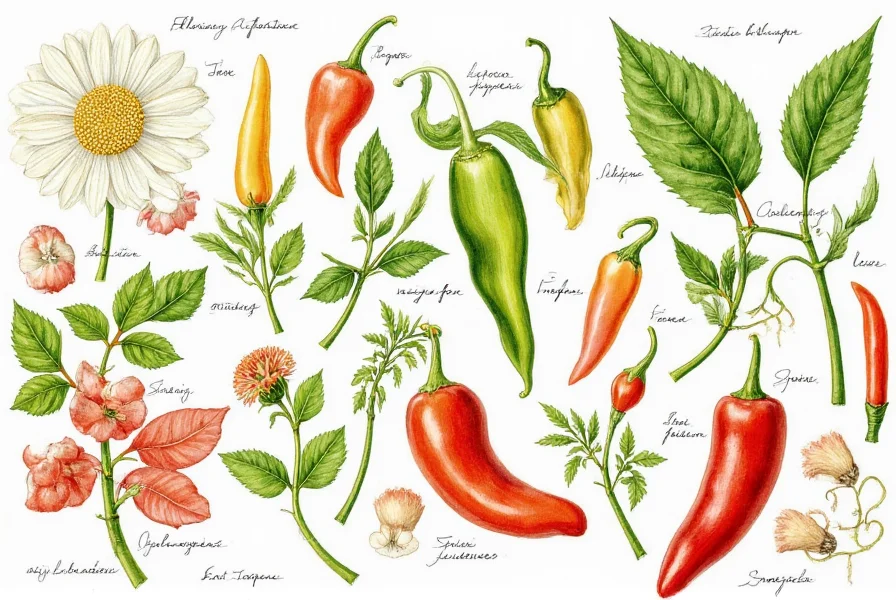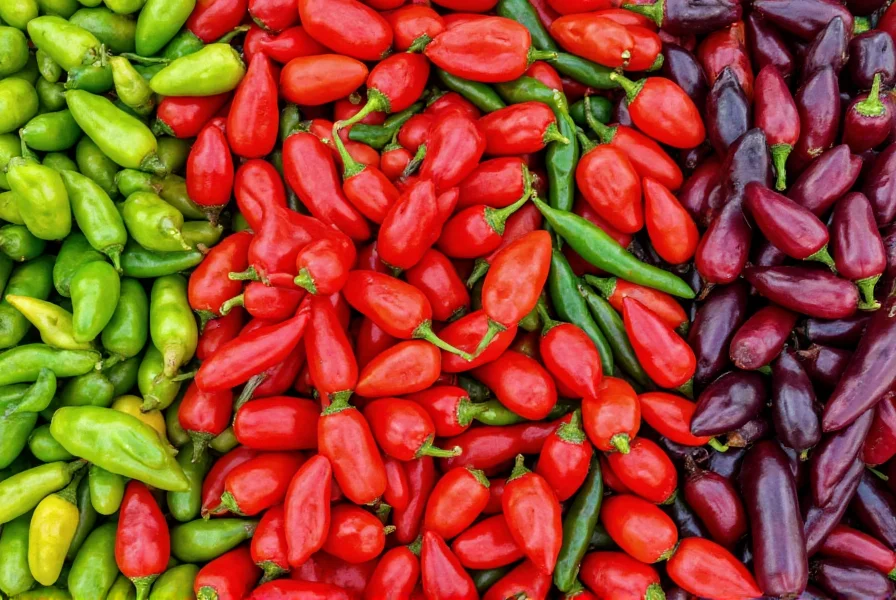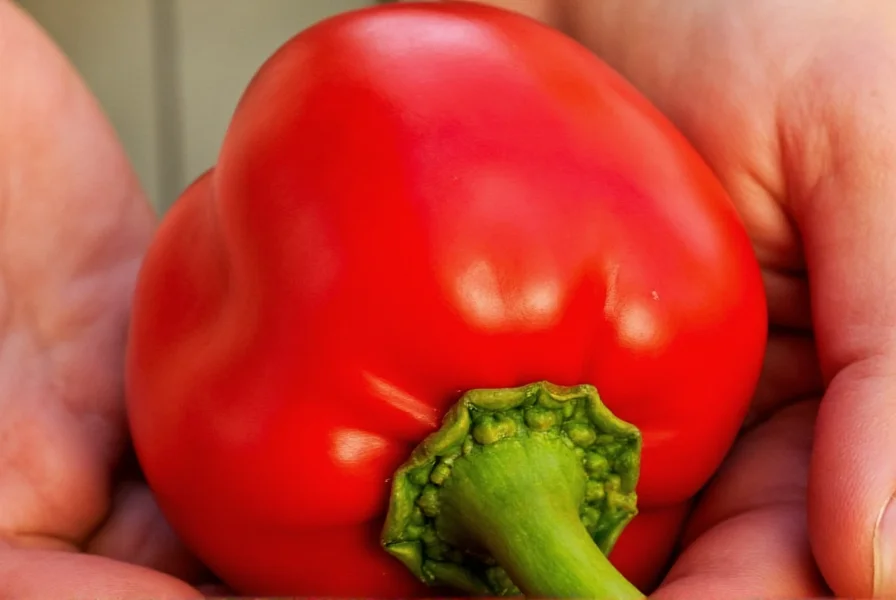Chili peppers represent one of the world's most widely used spices, with archaeological evidence suggesting domestication began approximately 6,000 years ago in regions spanning modern-day Mexico to Peru. These versatile plants belong to the genus Capsicum, which includes five primary domesticated species that form the foundation of global chili production.
Botanical Classification and Species Diversity
The genus Capsicum contains over 30 species, but only five have been widely domesticated for human consumption. Understanding these species provides essential context for anyone researching chili wikipedia information:
| Species | Common Names | Origin | Scoville Range |
|---|---|---|---|
| C. annuum | Bell peppers, jalapeños, cayenne | Mexico | 0-50,000 SHU |
| C. frutescens | Tabasco, malagueta | Central America | 30,000-100,000 SHU |
| C. chinense | Habanero, ghost pepper, Scotch bonnet | Amazon Basin | 100,000-2,200,000 SHU |
| C. baccatum | Aji peppers | Andes region | 0-50,000 SHU |
| C. pubescens | Rocoto, manzano | Andes region | 5,000-50,000 SHU |
The scientific classification of chili peppers follows a precise taxonomic structure: Kingdom Plantae, Order Solanales, Family Solanaceae, Genus Capsicum. This botanical framework helps researchers studying chili pepper varieties understand evolutionary relationships between different cultivars.

Historical Journey from Americas to Global Staple
Chili peppers remained exclusive to the Western Hemisphere until Christopher Columbus's voyages in the late 15th century. Contrary to popular belief, Columbus never actually reached India, but he mistakenly called these pungent fruits "peppers" due to their similarity to black pepper (Piper nigrum), which was highly valued in European markets.
The subsequent Columbian Exchange facilitated chili peppers' rapid spread across Asia, Africa, and Europe. Within decades, they became deeply integrated into culinary traditions worldwide. By the 16th century, Portuguese traders had introduced chili peppers to India, where they quickly replaced native black pepper in many dishes and became essential to regional cuisines.
Culinary Applications Across Global Cuisines
The versatility of chili peppers in cooking stems from their complex flavor profiles beyond mere heat. Different varieties contribute unique aromatic compounds that enhance dishes in specific ways:
- Mexican cuisine features complex mole sauces combining multiple chili varieties with chocolate and spices
- Thai cooking utilizes fresh bird's eye chilies for immediate heat and flavor in dishes like tom yum soup
- Indian culinary traditions employ dried red chilies for color and deep flavor in curries and spice blends
- Chinese Sichuan cuisine combines chili peppers with Sichuan peppercorns for distinctive numbing heat
- African dishes often incorporate peri-peri or other regional varieties for both heat and preservation
Professional chefs studying culinary uses of chili peppers recognize that heat perception varies based on preparation methods. Removing seeds and membranes reduces capsaicin concentration, while roasting develops sweeter, more complex flavors.
Measuring Heat: The Science of the Scoville Scale
The Scoville Organoleptic Test, developed by pharmacist Wilbur Scoville in 1912, originally measured chili heat through human taste panels. Modern laboratories now use high-performance liquid chromatography (HPLC) to precisely measure capsaicinoid concentrations, then convert these measurements to Scoville Heat Units (SHU).
Understanding the Scoville scale explained helps consumers select appropriate chili varieties:
- Bell peppers: 0 SHU (no capsaicin)
- Poblano peppers: 1,000-2,000 SHU
- Jalapeños: 2,500-8,000 SHU
- Serrano peppers: 10,000-23,000 SHU
- Cayenne peppers: 30,000-50,000 SHU
- Habaneros: 100,000-350,000 SHU
- Ghost peppers: 800,000-1,041,427 SHU
- Carolina Reaper: 1,400,000-2,200,000 SHU (current record holder)
Nutritional Profile and Health Implications
Chili peppers offer significant nutritional benefits beyond their flavor contribution. A single raw chili pepper (45g) typically contains:
- 18 calories
- 41% of the Daily Value (DV) for vitamin C
- 2% DV for vitamin A
- 2% DV for potassium
- 1% DV for iron and vitamin B6
Research into the health benefits of eating chili suggests capsaicin may provide several physiological effects:
- Potential metabolism boost through thermogenesis
- Temporary pain relief through depletion of substance P
- Anti-inflammatory properties
- Possible cardiovascular benefits
- Appetite regulation effects
However, excessive consumption can cause gastrointestinal distress, particularly in individuals with sensitive digestive systems or conditions like irritable bowel syndrome.

Cultivation Practices for Home Gardeners
Successfully growing chili peppers requires attention to specific environmental conditions. The chili pepper cultivation guide for home gardeners includes these essential considerations:
- Climate requirements: Most varieties need 70-90 frost-free days with temperatures between 70-85°F (21-29°C)
- Soil conditions: Well-draining soil with pH between 6.0-7.0 and adequate organic matter
- Water needs: Consistent moisture without waterlogging (approximately 1-2 inches per week)
- Sun exposure: Minimum 6-8 hours of direct sunlight daily
- Harvest timing: Most varieties can be harvested green or allowed to ripen to their final color
Beginners should consider starting with more forgiving varieties like jalapeños or serranos before attempting extremely hot cultivars. Proper handling techniques, including glove use when processing hot varieties, prevent accidental capsaicin exposure to sensitive areas.
Cultural Significance Across Civilizations
Chili peppers hold profound cultural importance beyond their culinary applications. In many Latin American countries, they feature in religious ceremonies and traditional medicine practices. The Mexican festival Fiesta del Chile en Nogada celebrates the poblano pepper's role in national cuisine.
In Asian cultures, chili peppers often symbolize protection against evil spirits. Chinese New Year celebrations sometimes include displays of red chilies for good fortune. The Indian state of Nagaland hosts an annual Chilli Festival honoring the revered bhut jolokia (ghost pepper).
Frequently Asked Questions
What is the scientific name for chili peppers?
Chili peppers belong to the genus Capsicum in the nightshade family Solanaceae. The five primary domesticated species are Capsicum annuum, C. frutescens, C. chinense, C. baccatum, and C. pubescens.
Why do chili peppers make your mouth feel hot?
The burning sensation comes from capsaicin, a chemical compound that activates TRPV1 receptors in your mouth. These receptors normally detect heat, so when capsaicin binds to them, your brain interprets the signal as actual heat, even though no temperature change has occurred.
How can you reduce the burning sensation from spicy food?
Dairy products like milk or yogurt are most effective because casein breaks down capsaicin. Sugar or starchy foods can also help absorb the oil-based compound. Water is least effective as capsaicin is hydrophobic and won't dissolve in water.
Are chili peppers fruits or vegetables?
Botanically, chili peppers are fruits because they develop from the flower of the plant and contain seeds. However, in culinary contexts, they're treated as vegetables due to their savory flavor profile and common usage in savory dishes.
What's the difference between chili and capsicum?
'Chili' typically refers to hot pepper varieties, while 'capsicum' is the botanical genus name. In some countries like Australia and New Zealand, 'capsicum' refers specifically to bell peppers (non-spicy varieties), creating regional terminology differences.











 浙公网安备
33010002000092号
浙公网安备
33010002000092号 浙B2-20120091-4
浙B2-20120091-4